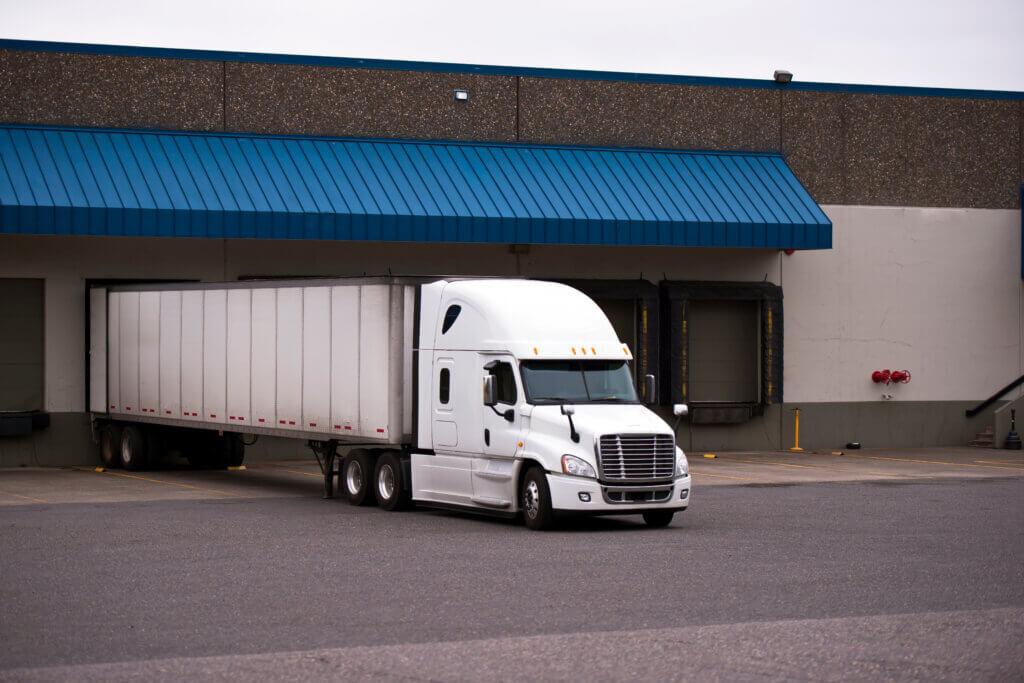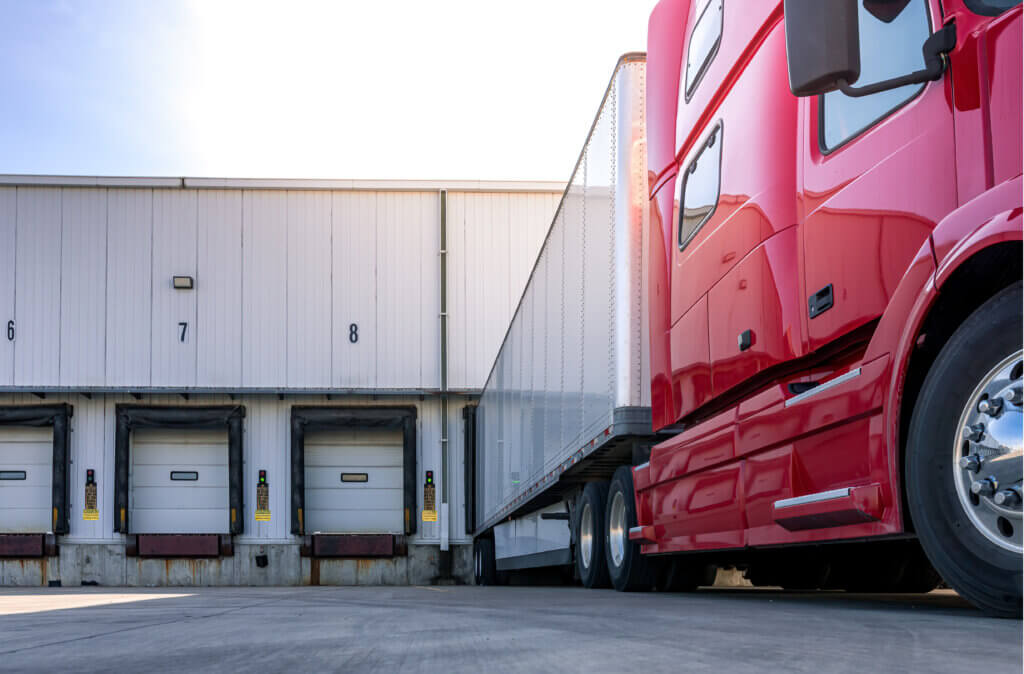The supply chain is and has continued to be an increasingly dynamic sector. For one, speed and efficacy have become crucial growth elements for businesses and organizations. Globalization has also forced these businesses to establish processes to maintain a competitive advantage and retain customer loyalty. One such effective response strategy used to achieve this is cross-docking.
Many people have encountered the term cross-docking while searching for a logistics service, but you might wonder, what is cross-docking in logistics? Cross-docking is a logistics process that can potentially deliver significant advancements in the supply chain’s speed and efficiency. Therefore, we explore what cross-docking means in logistics and how businesses can benefit from this strategy.

What Is Cross Docking
Cross-docking is a supply chain optimization strategy that effectively minimizes storage time by reducing or eliminating the need for storage. It involves preparing freight for delivery to customers immediately after unloading them from a carrier, bypassing the need for extended storage. Doing so makes the supply chain less complicated and more effective in meeting clients’ needs.
Typically, the cross-docking process occurs in a distribution terminal comprising a trucking bay and double-sided dock doors. This setup makes it easier for incoming and outgoing shipments. Freight received at the inbound dock is immediately transferred to the outbound transportation dock without needing storage.
There are two types of cross-docking – direct and indirect cross-docking. For direct or pre-distributed cross-docking, the goods are already separated and only need to be received by the outbound units. Direct cross-docking is the most basic model since it does not require much handling. On the other hand, indirect cross-docking needs goods to be moved to an intermediate location, where they will be separated and organized before being sent to the outbound units.
Cross-docking has recently received massive traction as a logistics management practice due to its usefulness in streamlining the supply chain. It is most useful in several situations where there may be shortages in time and budget.
How Does Cross-Docking Work

Cross-docking services are a prevalent aspect of logistics now, with several providers offering terminals as distribution centers for the cross-docking process. In most shipping cases, workers direct truck freight to the inbound side of the cross-dock terminal. As soon as the inbound transportation completes the docking process, the goods are moved to the outbound destination, where they can be unloaded, sorted, and evaluated to identify their final destinations.
After the sorting process, goods are moved to the destined outboard dock, where they then make their way to customers after they have been loaded into outbound transportation. The basic cross-docking model proceeds in different stages.
- The carrier arrives with freight.
- The freight is sorted according to customer needs.
- The cargo is then distributed according to the corresponding routes.
Several businesses in various industries can employ cross-docking to improve their supply chain. For instance, temperature and time-sensitive goods can benefit from significantly reducing or eliminating storage time. Furthermore, delivering pre-packaged and sorted goods to a customer can become more efficient through cross-docking.
However, cross-docking only suits some shipping needs. It is, therefore, essential to consider all options and decide if cross-docking will increase your business’s speed, efficiency, cost, and customer satisfaction.
What Type Of Businesses Can Benefit From Cross-Docking
While the benefits of cross-docking are apparent, there is always the need to implement it appropriately and in the right conditions. Cross-docking is ideal for businesses with stable, consistent demand for their product and a high inventory turnover. However, other companies can adopt this process only if it suits their supply chain, transportation strategy, infrastructure, and requirements. Here are the types of businesses that benefit from the cross-docking model.
● Businesses With Time-Sensitive Products
Businesses that sell products with a short shelf-life should consider opting for cross-docking. This supply chain strategy eliminates the need for a supplier to store goods before marketing them off to another business, thus reducing the time product takes to reach the end user. Cross-docking saves such businesses’ storage costs and reduces the risk of perishable goods going bad.
● Businesses With Several Suppliers
The cross-dock model avoids extensive storage for incoming freight, allowing it to move directly from one destination to another. This makes cross-docking the perfect strategy for businesses to manage goods from multiple suppliers as the distribution becomes more effortless. The cross-docking process allows for an efficient and rapid receipt, sorting, consolidation, and distribution of goods from different suppliers, ultimately reducing transportation and storage costs.
Benefits Of Cross-Docking
At this point, it’s easy to see how cross-docking enables a more streamlined supply chain. It is ideal for businesses looking to reduce costs, improve speed and efficiency, and improve customer satisfaction. Yet, companies looking to employ cross-docking still stand to gain a lot. Here are a few benefits of cross-docking for supply chain businesses.
● Accelerated Order Fulfilment
Cross-docking reduces or eliminates the need for cost and labor-intensive storage processes, which leads to more rapid delivery of goods to their final destination. The cross-docking process sees large batches of goods separated and sorted into smaller shipments, resulting in increased delivery efficiency and accelerated order fulfillment through freight consolidation.
Additionally, receiving inventory becomes more straightforward as businesses only have to worry about immediate shipment rather than employing a warehouse management system to guarantee a more optimized movement.
● Cost and Time Effective
For most businesses, the inventory cost is usually high, from first-mile and last-mile shipping to procurement and other logistics expenses. Thankfully, with cross-docking, companies can reduce most of these costs and manage their inventory more effectively without having to manage a warehouse.
Additionally, cross-docking is more time-effective as it reduces labor by tracking inventory in bulk, eliminating the need for businesses to follow the stock throughout the supply chain. As a result, companies run more efficiently and foster faster inventory management than traditional processes.
● Reduced Handling
As a result of eliminating the need to track a business’s inventory flow, cross-docking minimizes material handling. Companies that employ cross-docking explore higher inventory turnover and less damage to products caused by material handling associated with temporary storage. As the chances of handling goods reduce, the product is more likely to remain in its best quality.
This benefit is most apparent for businesses selling products with shorter shelf life. These businesses employ cross-docking for delivering products to customers or other companies faster through a more streamlined supply chain. Additionally, cross-docking remains an ideal process for high-quality products by reducing the chance of product damage due to temporary storage loading and unloading processes.
● Serves As A Central Site For Handling Goods
Logistics services implement cross-dock terminals for receiving, sorting, consolidating, and transporting freight to their final destinations. However, these terminals also serve as a central location for last-mile delivery. Having a primary site for handling goods is an effective way to improve supply chain optimization.
Additionally, a central hub that manages inventories and handles all goods allows businesses to fulfill business-to-business orders without storing inventory in a warehouse. Companies can also fulfill individual orders effectively, which makes cross-docking an efficient and streamlined solution for the logistics element of a supply chain.
Conclusion
Cross-docking is a crucial aspect of logistics, helping to streamline the entire supply chain process. Businesses can improve inventory management and minimize storage needs and costs by developing a central location for sorting and distribution.
Cross-docking also reduces the chance of product damage and enables faster delivery to end customers. Different types of businesses from several industries can benefit from cross-docking if implemented correctly and in the right circumstances. It’s also an effective solution for business-to-business fulfillment. Overall, companies seeking to optimize their supply chain, improve inventory turnover and increase their efficiency and customer satisfaction should consider implementing the cross-docking strategy.
